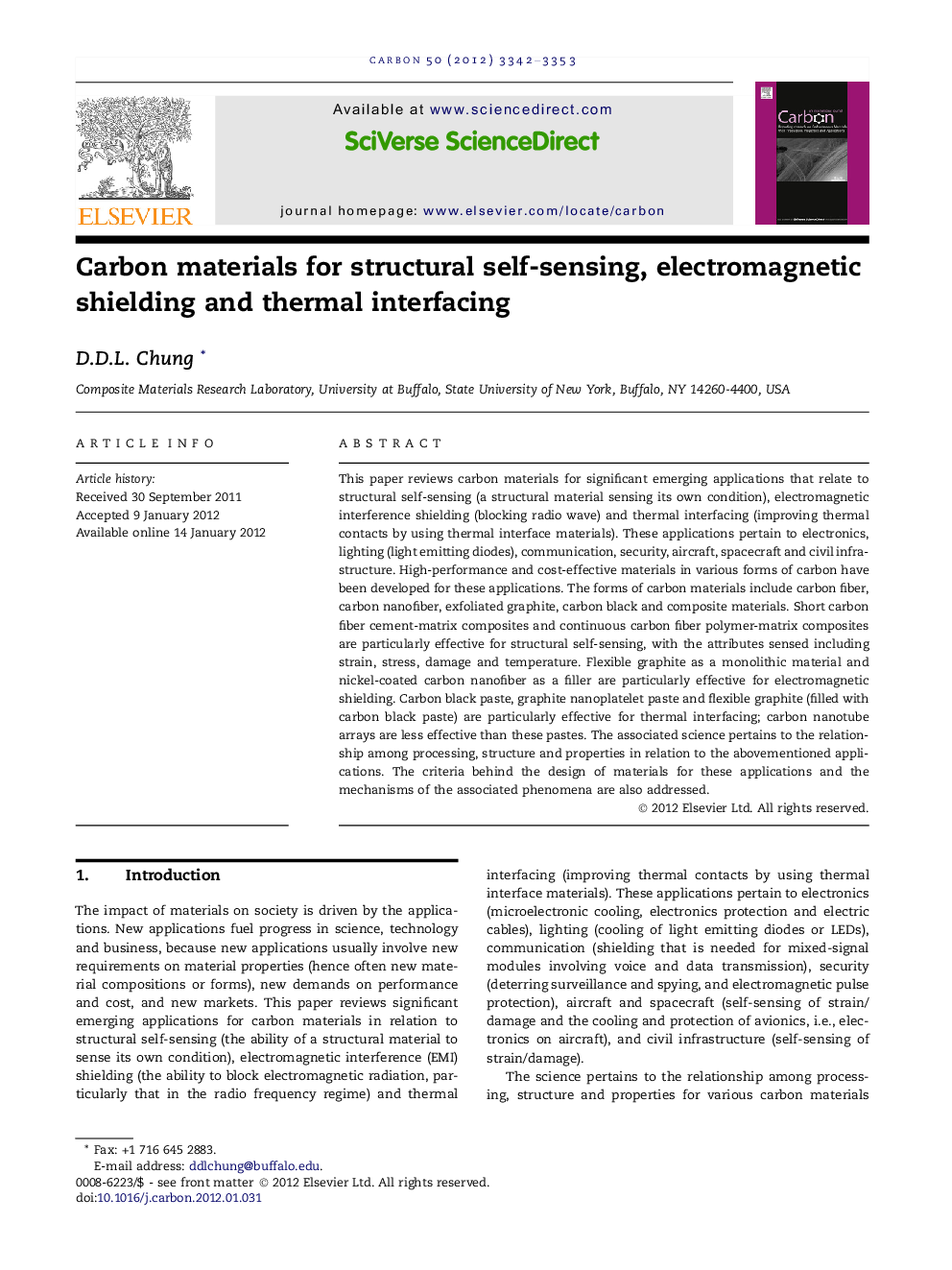| Article ID | Journal | Published Year | Pages | File Type |
|---|---|---|---|---|
| 1415052 | Carbon | 2012 | 12 Pages |
This paper reviews carbon materials for significant emerging applications that relate to structural self-sensing (a structural material sensing its own condition), electromagnetic interference shielding (blocking radio wave) and thermal interfacing (improving thermal contacts by using thermal interface materials). These applications pertain to electronics, lighting (light emitting diodes), communication, security, aircraft, spacecraft and civil infrastructure. High-performance and cost-effective materials in various forms of carbon have been developed for these applications. The forms of carbon materials include carbon fiber, carbon nanofiber, exfoliated graphite, carbon black and composite materials. Short carbon fiber cement-matrix composites and continuous carbon fiber polymer-matrix composites are particularly effective for structural self-sensing, with the attributes sensed including strain, stress, damage and temperature. Flexible graphite as a monolithic material and nickel-coated carbon nanofiber as a filler are particularly effective for electromagnetic shielding. Carbon black paste, graphite nanoplatelet paste and flexible graphite (filled with carbon black paste) are particularly effective for thermal interfacing; carbon nanotube arrays are less effective than these pastes. The associated science pertains to the relationship among processing, structure and properties in relation to the abovementioned applications. The criteria behind the design of materials for these applications and the mechanisms of the associated phenomena are also addressed.
